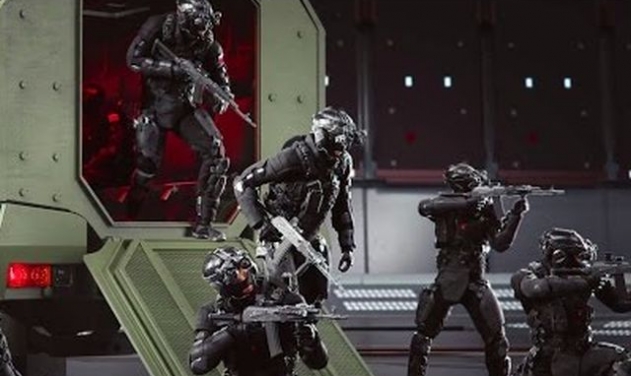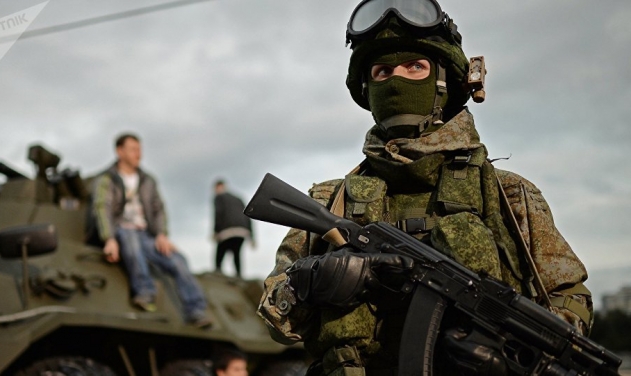Mine-protected Boots, Stealth Fabric in Russian Future Soldier Gear

"The newly-developed fabrics we use cannot be picked up by infrared detectors. They block the heat coming from the human body. Military personnel wearing such clothing remain invisible to enemy helicopters’ night vision instruments,” TASS said today quoting Dmitry Semizorov the CEO of TsNIITochMash the designer and producer of special gear for the Russian military.
Any modern combat helicopter, equipped with night vision instruments, is one of the infantry’s worst enemy. Evading its electronic eyes is next to impossible, which has been confirmed more than once in various local conflicts. In addition, Thermal imagers and infrared instruments are used by snipers and are installed on armored vehicles and drones, he said.
Semizorov said, "Very soon Ratnik-3 may incorporate medical and biological condition sensors and also protective smart glasses containing a special feature for projecting information to the lens surface."
Ratnik’s designers plan to create special footwear protecting personnel from land mines."We are considering the possibility of equipping such footwear with mine detectors and of placing a mine field suppression system inside such footwear or some other part of the gear," he specified.
Semizorov said boots capable of protecting a soldier from anti-personnel mine blasts have been created in principle and now they are going to be made lighter and more convenient. "For now the sole and heel are too thick," he noted.
The Ratnik gear has been repeatedly used in real combat situations and has shown itself to be 100-percent resistant to enemy fire. “We have certain information about the impact our product was exposed too in real combat. The helmets and armored vests turned out to be fully bullet-proof," Semizorov said.
The helmet protects a total area of 30 square decimeters, but at the same time remains very light - just one kilogram, which allows it to be equipped it with various instruments without overstraining the soldier’s neck. The helmet’s sub-crown system eases not only low impulse impacts (such as strikes with a stick or stone), but also high impulse ones (caused by bullets or bomb fragments).
The Ratnik vest’s effective protection area is one of the world’s largest. Its plates can stand ten sniper rifle shots fired at a distance of ten meters. The reinforced configuration of the Ratnik vest provides extra lateral protection and anti-shrapnel protection for the shoulders, hands and groin. The Ratnik’s overalls protect the whole body from the impact of bomb fragments.
Second-generation sets of Ratnik gear have been supplied to the ground and airborne troops as well as the Marines since 2016. They consists of armored clothing and combat equipment, small arms, and targeting and reconnaissance gadgets. The third generation soldier gear, known as the Ratnik-3 is expected to replace the second generation product currently in use. The transition to the Ratnik-3 gear will be gradual, he added.










